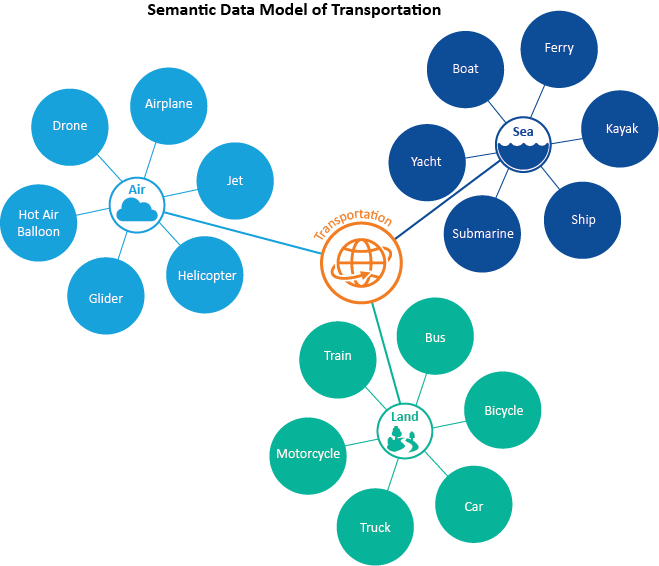In today’s dynamic, data rich environment, effective data management involves more than merely gathering and examining information. It hinges on an important, yet frequently underestimated element – metadata. This often-overlooked facet of data is asserting its significance more than ever, serving as a key strategic tool that empowers organizations to navigate through the complexities of information with clarity and insight.
Metadata’s significance extends beyond mere information management; it safeguards data security, ensures regulatory compliance, enhances team efficiency, improves decision making, and plays a crucial role in aligning departmental efforts, fostering a culture of collaboration and knowledge exchange.
What is metadata and why does it matter?
Metadata refers to the information or data that describes other data. In simpler terms, it is “data about data”. It provides valuable insights and details about the data, making it easier to manage, analyze, and utilize. For example, imagine a spreadsheet containing sales figures for a particular product. The metadata for this spreadsheet could include the date range, relevant departments involved, and the source of the data. Metadata helps businesses with the comprehension of data at a granular level, enabling them to understand trends and gain insights to make informed decisions.
Incorporating structured and comprehensive metadata into your data management1 strategy is like equipping complex systems with high-precision tools. Metadata plays a crucial role in a well-defined data strategy helping organizations to manage, store, secure, and use data to achieve its goals.
Maximizing organizational efficiency through metadata management
Here are some of the many ways the power of metadata enhances your data strategy for success:
1. Ensures data is easily accessible and understandable: metadata helps structure and categorize large volumes of data by providing a standardized framework. It ensures that data is classified, labeled, and organized in a way that makes it easily accessible and understandable.
2. Saves time and enhances efficiency: metadata acts as a roadmap for data discovery. It allows users to quickly locate and retrieve the specific data they need, saving time and improving efficiency. Additionally, it provides an overview of available data, helping users identify relationships and patterns.
3. Ensures data consistency and interoperability: by standardizing attributes, naming conventions, and vocabularies using business glossaries2 and data catalogues3, metadata facilitates interoperability, allowing different systems and software to work together seamlessly. When metadata adheres to standards, data integration becomes smoother and comparisons across datasets become feasible.
4. Enables efficient use of data across teams: metadata promotes consistency and alignment by standardizing interpretations of key data concepts across different teams and departments. It ensures that everyone is on the same page when it comes to understanding and using data. Without metadata, teams may face misinterpretations and inconsistencies, jeopardizing data-driven initiatives, and decisions.
5. Improves decision-making: with metadata, organizations can gain a better understanding of their data assets. It enables stakeholders to make informed decisions based on accurate and reliable information. Metadata achieves this by providing descriptive, structural, and administrative details about data, offering clarity on its origin, accuracy, context, and relevance. It provides valuable insights into the relevance, usage, and importance of different data sets, allowing organizations to prioritize and allocate resources accordingly.
6. Enhances safe data handling and privacy compliance: metadata plays a critical role in data security and compliance by helping out with the rules and processes that decide who gets to see what data, for how long and under what conditions. It’s a guide to data care, data quality, and the systems used to enforce and keep an eye on these key parts of data management.
Metadata not only boosts data security but also ensures adherence to strict privacy laws, reducing the risk of breaches and non-compliance penalties. With privacy laws like PIPEDA (Personal Information Protection and Electronic Documents Act), PHIPA (Personal Health Information Protection Act), and Quebec’s Bill 64 (Law 25) metadata provides essential context for managing personal and sensitive data, ensuring access is limited to authorized personnel. This enables precise security measures, such as encryption or access controls, aimed directly at protecting sensitive data.
7. More efficient compliance: by recording sensitive data types and their origins in metadata, companies can more efficiently adhere to all those compliance rules, from PIPEDA to HIPAA, and avoid big fines as well as safeguard their reputation.
8. Faster, more accurate data discoverability & traceability: as data volumes continue to grow, metadata becomes increasingly important as an advanced search tool enabling users to search for specific data attributes or properties such as source, quality, and relevance, facilitating faster and more precise data retrieval. Metadata also plays a vital role in tracking data lifecycle4, resulting in more efficient data processing5, storage, and retrieval.
9. Streamlines data sharing organization-wide: by leveraging metadata, organizations can streamline data sharing processes. It facilitates a cohesive and collaborative analytics process, enabling teams to work together seamlessly and leverage shared data assets. This is achieved by offering clear context and guidelines on data usage, ensuring that every team member accesses and interprets data in a uniform manner.
10. Key to strategic data management: metadata plays a pivotal role in strategic data management. By employing strategies such as controlled vocabulary6, taxonomies7, and semantic metadata mapping8, organizations can enhance data quality, consistency and reliability. These methods ensure accurate information capturing, boosting confidence in automation and analytical analysis. Essentially, it makes your data easier to understand.
Example – Data Taxonomy for a Retail Business
This is an example of a basic data taxonomy that could be used in a retail business. Think of it as a roadmap for understanding and managing key aspects of a retail business. Each category represents a distinct area of business operations. By analyzing these categories, a business can gain insights into customer behaviour, product performance, sales trends, stock management, and supplier relationships, enabling informed decision-making and strategic planning. Essentially, it’s a guide for where to look and what to analyze to optimize business operations.
| Customer Data | Product Data | Price | Sales Data | Inventory Data | Supplier Data |
| Personal Information Name Age Gender Location |
Product ID | Category: Clothing Electronics Home Goods etc. |
Sale ID | Product ID | Supplier ID |
| Contact Information: Phone number |
Product Name | Sub-category: For example, under clothing:
|
Customer ID | Quantity in Stock | Supplier Name |
| Purchase History: Items purchased Date of purchase Amount spent |
Product Description | Product ID | Reorder Level | Contact Information | |
| Date of Sale | Supplier Information | Products Supplied | |||
| Total Amount | |||||
| Payment Method: Cash Credit/Debit Card Online Payment |
Example – Semantic Data Model
Semantic metadata mapping is often done with a semantic data model (SDM) such as the following example. SDMs enhance data analysis by combining semantic and graphic visualization. The process involves abstraction, focusing on specific qualities and excluding irrelevant parts. SDMs facilitate the meaningful organization and relationship of objects.

A final thought
Metadata goes beyond just aiding in data retrieval and decision-making: it’s the foundation of an organization’s data strategy. It ensures data is secure, compliant and, most importantly, understood consistently by everyone in the organization. It’s what keeps teams and departments collaborating and sharing knowledge seamlessly.
In our ever-evolving digital age, with surges in data volume and continuous technological advancements, integrating metadata is not just beneficial but essential. It empowers organizations to truly leverage their data, carving out a competitive advantage in the process.
How Optimus SBR can enhance your data strategy with metadata
We offer a range of services to help you incorporate metadata into your data strategy to facilitate superior data management practices by improving data quality, ensuring compliance with relevant regulations, and streamlining data integration efforts.
Optimus SBR’s Data & Analytics Practice
Optimus SBR provides data and analytics advisory services customized to support the needs of public and private sector organizations. We offer end-to-end solutions, from data strategy and governance to data management, data engineering, data architecture, data science, and data analytics.
Contact Us to learn more about our Data practice and how we can help you on your data journey.
Doug Wilson, Senior Vice President and Technology & Data Practice Lead
Doug.Wilson@optimussbr.com
Eric Tobias, Principal, Data Practice
Eric.Tobias@optimussbr.com
Definitions
1Data management: practice of organizing, storing, protecting, and ensuring the quality and accessibility of data throughout its lifecycle. It encompasses a range of activities, such as data governance, data architecture, and data security.
2Business glossary basics: a well-crafted business glossary for metadata is crucial in ensuring effective communication within an organization. It should include:
- Business term definitions: clear definitions of business terms provide a common language for everyone.
- Business context and ownership: understanding how terms fit into your business operations is essential.
- Assigning ownership ensures responsibility for the accuracy, completeness, and timeliness of each data element.
- Data sources and lineage: detailing the origin of each piece of data and its journey through your systems clarifies the data’s history and transformations.
2Business glossary advanced
- Metadata element relationships: describing how different metadata elements interconnect provides a deeper understanding of your data landscape.
- Usage instructions and governance: clear guidelines on how to use each data element, along with standards and policies governing your data, ensure proper data management.
- Key performance indicators and business metrics: Including metrics like customer acquisition cost, churn rate, and profit margin in your glossary helps everyone understand their calculations, meanings, and significance to your business.
3Data catalogue
- Comprehensive and user-friendly inventory: tailored for both IT professionals and business users.
- Similar to a master index: meticulously catalogues where data is stored and highlights the various data types linked to specific subject areas.
- Accessible and understandable: allows users to efficiently find and utilize the necessary information.
4Data lifecycle: the sequence of stages that a particular unit of data goes through from its initial generation or capture to its eventual archival and/or deletion at the end of its useful life.
5Data lineage: the process of recording and tracking the flow of data throughout its lifecycle. It enables businesses to visualize and understand where data comes from, how it transforms over time, and where it’s ultimately stored.
6Controlled vocabulary: predefined set of terms used to maintain consistency and reduce ambiguity in data. It is a common language that ensures everyone in the organization uses the same terms for the same concepts. This aids in precise data retrieval and supports effective communication.
7Taxonomies: hierarchical frameworks that classify data in an organized and systematic manner. They represent relationships between different data items and provide a structured way to access and traverse through huge volumes of data. Taxonomies can greatly enhance the ease and speed of data retrieval.
8Semantic metadata mapping: semantic mapping is a technique used in such areas as information retrieval and natural language processing. It links words and phrases with their inherent meanings by analyzing their context to decipher its connections to other words and concepts. By doing this, semantic mapping improves search result accuracy, recommends relevant content, and enables smarter information retrieval.




Industry Insights
Service Insights
Case Studies
Company News